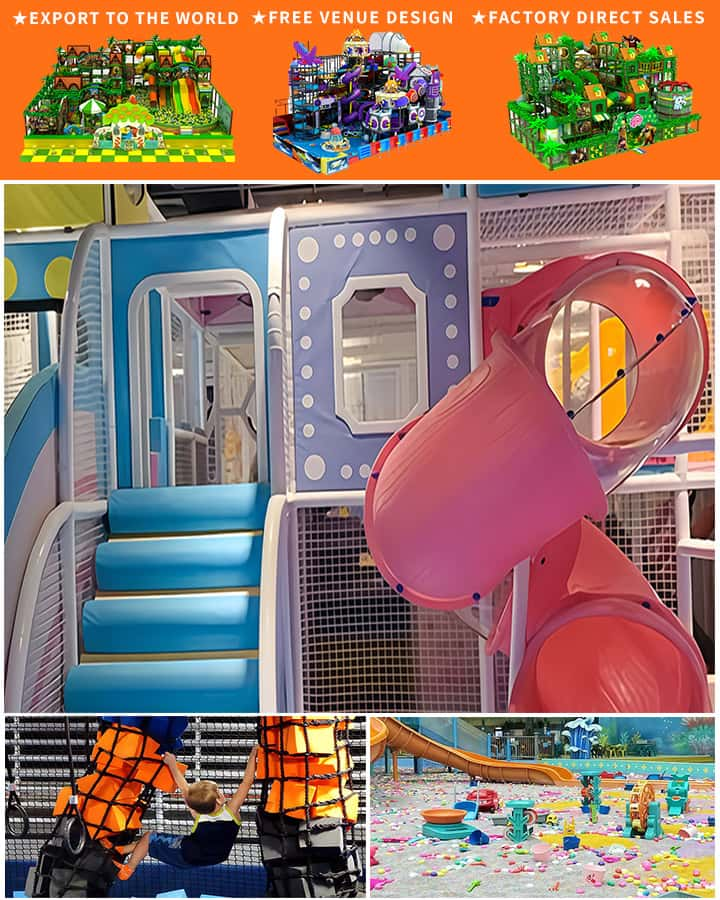In today’s world, where screen time is often at an all-time high, creating a children’s indoor playground can be a revolutionary way to engage kids in active and imaginative play. Whether it’s due to unfavorable weather conditions or simply the need for a safe, controlled environment, indoor playgrounds offer numerous benefits for both children and parents. Here’s a comprehensive guide on how to set up the ultimate children’s indoor playground.
Why Create an Indoor Playground?
- Physical Activity: With growing concerns about childhood obesity and sedentary lifestyles, an indoor playground encourages physical activity and helps kids burn off energy.
- Mental Development: Engaging in creative and physical play stimulates cognitive development, improving problem-solving skills and creativity.
- Social Interaction: Indoor playgrounds provide a space where children can interact with peers, fostering social skills and teamwork.
- Safety: Unlike outdoor settings, indoor playgrounds are safer as they eliminate risks associated with traffic, strangers, and harsh weather conditions.
Key Elements of a Children’s Indoor Playground
- Climbing Structures: Climbing walls, ropes, and ladders not only enhance motor skills but also build confidence as children overcome challenges.

- Slides: A variety of slides, including straight, spiral, and even transparent ones, add an element of fun and excitement to the playground.
- Trampolines: Trampolines are excellent for developing balance and coordination while providing endless entertainment.
- Ball Pools: Filled with colorful plastic balls, ball pools are perfect for sensory play and can also serve as a soft landing area.
- Interactive Games: Incorporating interactive games like touchscreens, arcade games, and educational installations can make learning fun.
- Soft Play Areas: Padded mats and foam blocks ensure that children can play safely without the risk of serious injuries.
Design Considerations
- Safety First: Non-toxic materials and rounded edges are crucial to prevent injuries. Make sure the equipment is age-appropriate and meets safety standards.
- Theme and Aesthetics: Choose a theme that excites children—be it a jungle adventure, underwater wonderland, or space exploration. Consistent aesthetics can enhance the overall experience.
- Space Planning: Ensure there’s enough space for free movement and that different play areas are clearly defined to avoid overcrowding.
- Parental Comfort: Include seating areas for parents to relax and keep an eye on their children. Offering amenities like Wi-Fi and refreshments can also be a big plus.
Benefits Beyond Fun
- Stress Relief: Physical activity is known to reduce stress and anxiety levels in children, contributing to better mental health.
- Educational Opportunities: Many indoor playgrounds incorporate educational elements, such as puzzles and interactive exhibits, making learning enjoyable.
- Parent-Child Bonding: Spending quality time together in a fun, relaxed environment strengthens parent-child relationships.
Maintenance and Upkeep
Regular maintenance is key to ensuring the longevity and safety of the playground. This includes routine checks for wear and tear, sanitizing equipment, and promptly addressing any damage. Additionally, keeping the area clean and organized ensures a pleasant experience for everyone.
Conclusion
A well-designed children’s indoor playground offers a myriad of benefits, from physical fitness to mental stimulation. By incorporating a variety of engaging elements and prioritizing safety, you create a space where children can thrive. So, whether you’re a parent looking to enrich your child’s playtime or an entrepreneur aiming to start a family-friendly business, investing in a children’s indoor playground is a rewarding endeavor.




